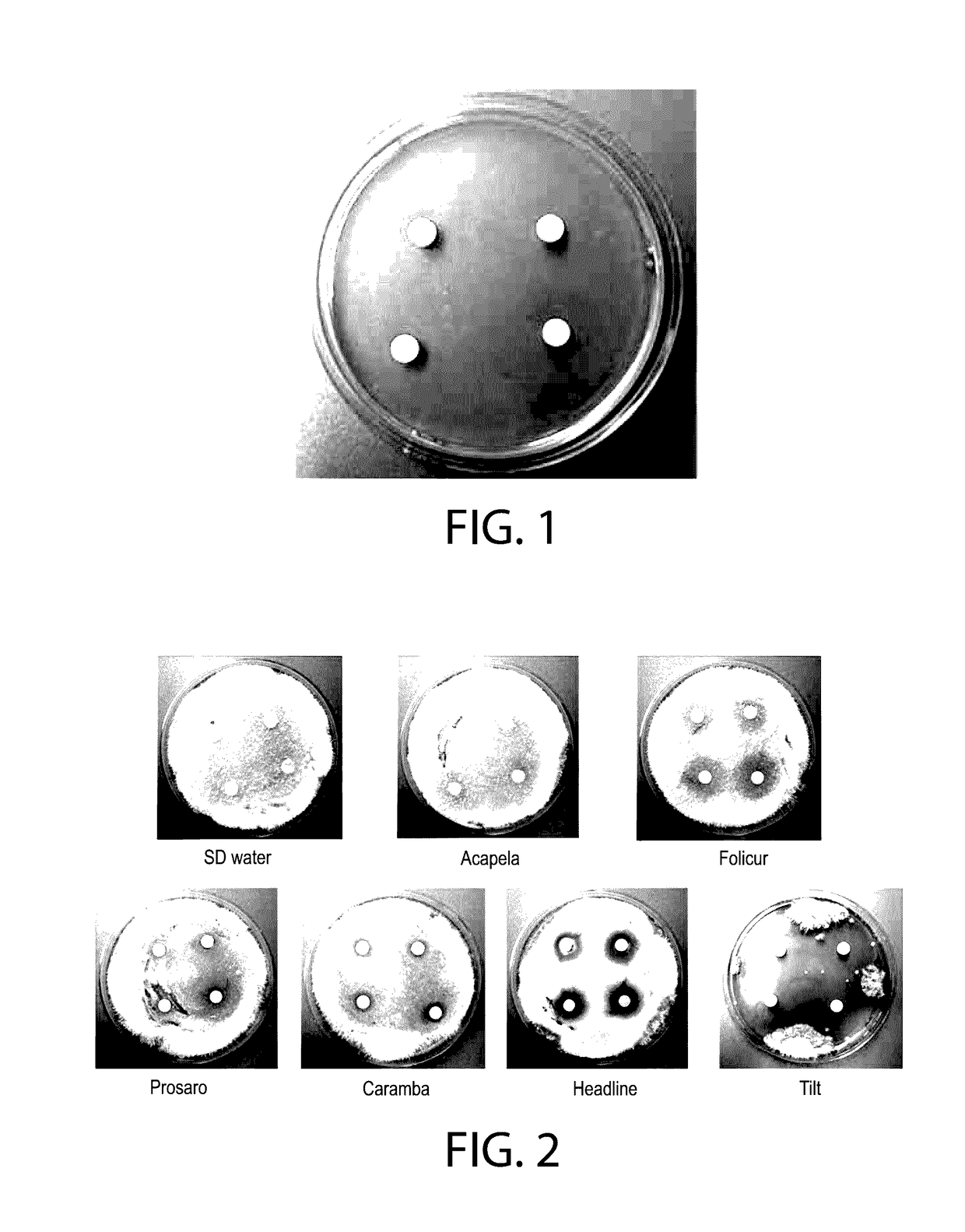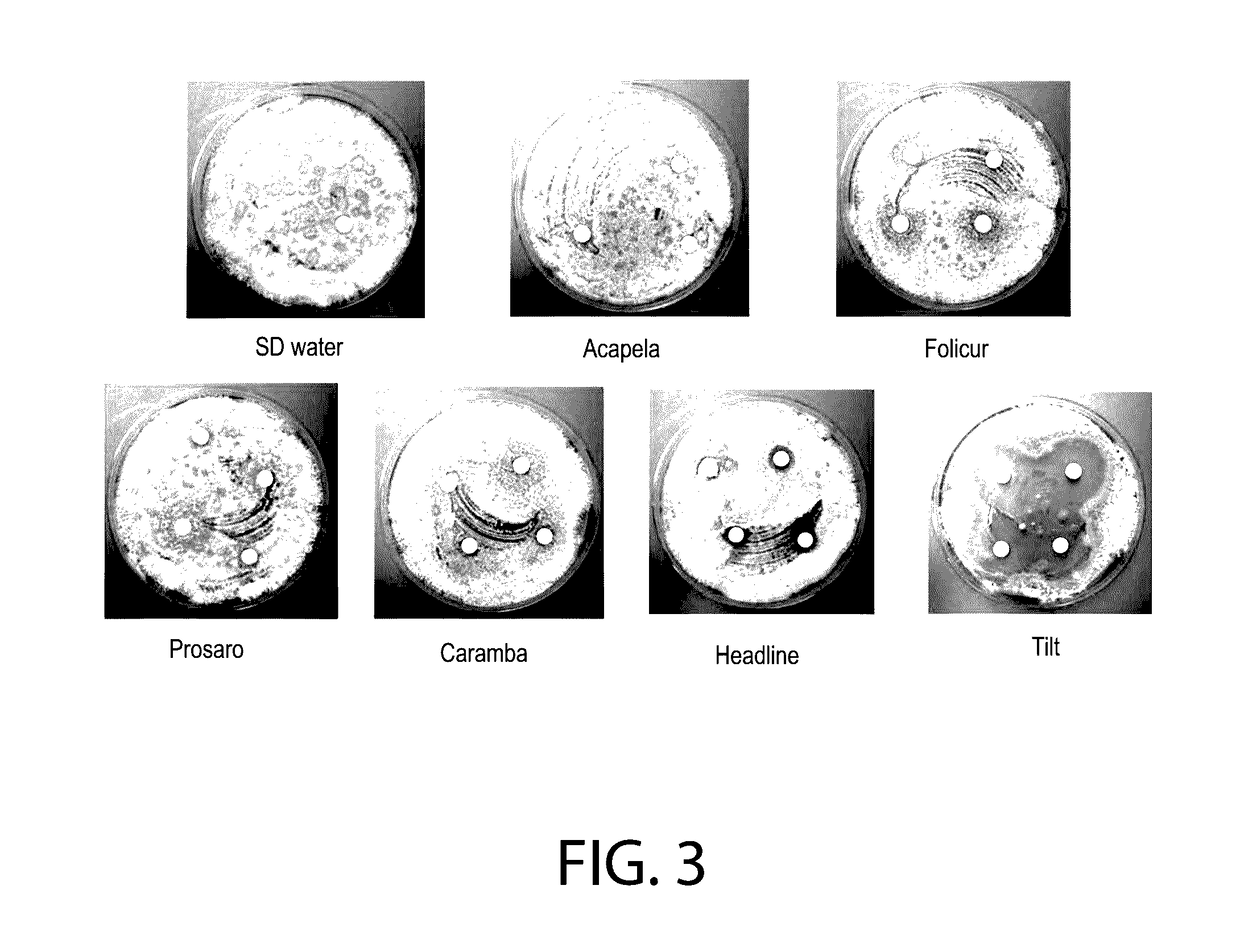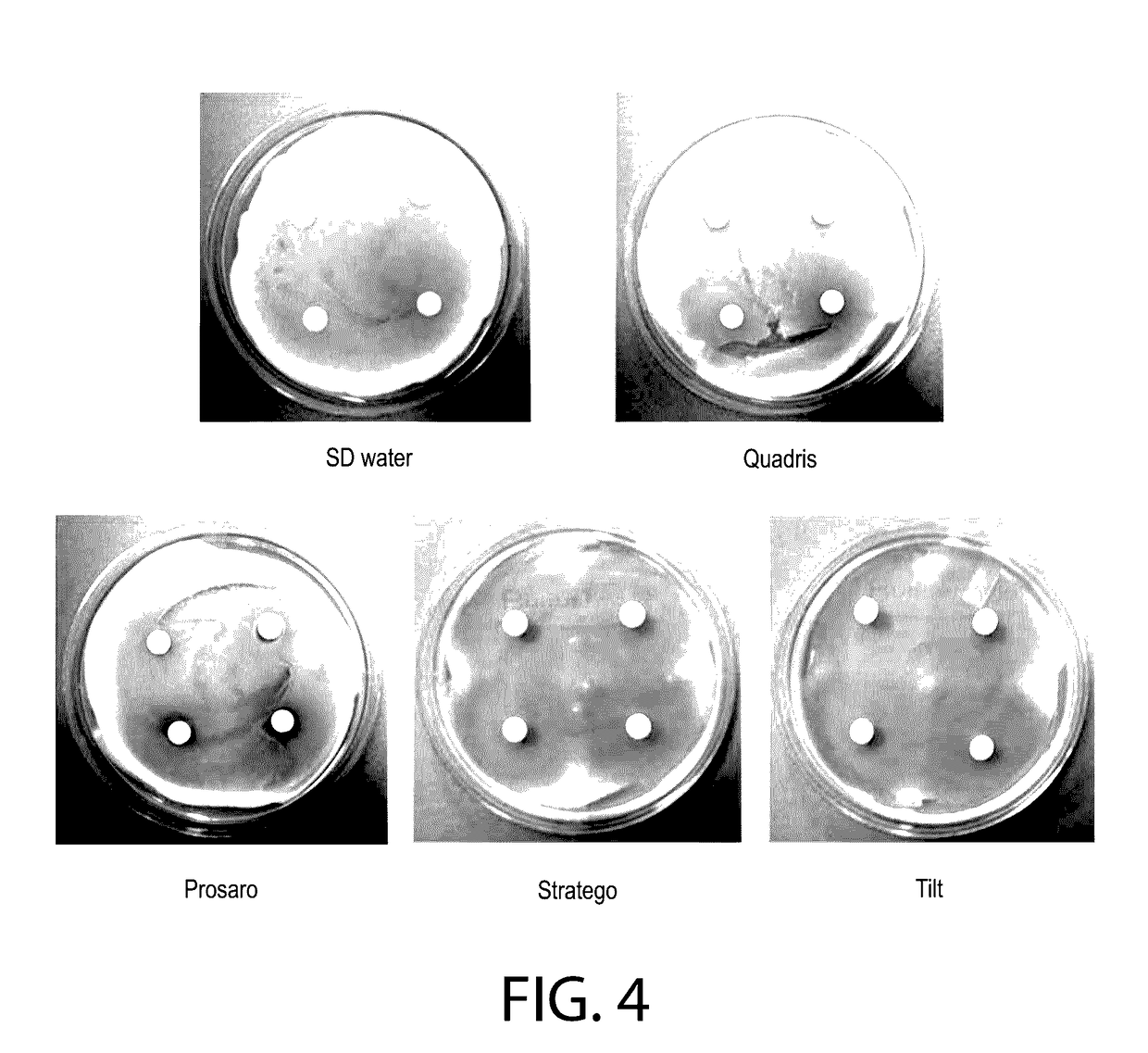Clonostachys rosea inoculated plant materials with fungicides and adjuvants
a technology of clonostachys rosea and inoculated plant materials, which is applied in the field of microbial inoculants, can solve the problems of affecting the health of workers, clonostachys rosea may not completely control pathogenic fungi, and the use of conventional chemical fungicides can become fundamentally problematic, so as to reduce environmental and worker exposur
- Summary
- Abstract
- Description
- Claims
- Application Information
AI Technical Summary
Benefits of technology
Problems solved by technology
Method used
Image
Examples
example 2
[0121]The method of Comparative Example 1 was followed, except the four disks of the fungicide-soaked disks were placed onto the spore lawn of C. rosea 48 hours after the PDA plates were inoculated with the Clonostachys rosea spores.
[0122]The PDA plates upon inoculation are shown in FIG. 6. The results of the experiments are shown in FIGS. 7 and 8. FIG. 7 documents the results of the tested fungicides applied to a 48-hour old lawn of C. rosea 88-710. FIG. 8 documents the results of the tested fungicides applied to a 48-hour old lawn of C. rosea ACM941. In both cases, the images were taken 2, 4, 6 and 10 days after the paper disks were applied to the 48 hour old lawn on PDA plates.
[0123]FIG. 7 shows that the tested fungicides showed little or no effect on growth and conidia development of C. rosea 88-710 when the fungicide-treated disks were applied to a lawn of established mycelium of the fungus. FIG. 8 shows that the tested fungicides showed little or no effect on growth and conidi...
example 4
[0126]The method of Example 2 was followed, except different fungicides were tested. The results are shown in FIG. 11. FIG. 11 documents that the tested fungicides had little or no effect on growth and sporulation of C. rosea 88-710 when the fungicide-treated disks were applied to a lawn of established mycelium.
example 6
[0128]Soybean seeds were treated with a fungicide (CruiserMaxx® Beans), and then were applied to a PDA plate of an established 48 hour old spore lawn of C. rosea 88-710. The results are documented in FIG. 13, which shows that the tested fungicide have little or no effect on C. rosea 88-710 when the fungicide coated soybean seeds applied on the established spore lawn of the fungus.
[0129]The observations for disks placed on the agar immediately after application of C. rosea spores show that Tilt 250E and Stratego markedly suppressed C. rosea germination and growth (35 mm clear zones of inhibition of germination; little growth back over clear zones) (Table 3). Other fungicides produced inhibition zones from 20 to 25 mm in diameter (Table 2). Prosaro inhibited C. rosea spore germination, resulting clear zones 1 to 3 mm away from the disks, but did not suppress sporulation of the fungus. Quadris did not inhibit spore germination (no clear zones) but showed some inhibition of mycelial gro...
PUM
 Login to View More
Login to View More Abstract
Description
Claims
Application Information
 Login to View More
Login to View More - R&D
- Intellectual Property
- Life Sciences
- Materials
- Tech Scout
- Unparalleled Data Quality
- Higher Quality Content
- 60% Fewer Hallucinations
Browse by: Latest US Patents, China's latest patents, Technical Efficacy Thesaurus, Application Domain, Technology Topic, Popular Technical Reports.
© 2025 PatSnap. All rights reserved.Legal|Privacy policy|Modern Slavery Act Transparency Statement|Sitemap|About US| Contact US: help@patsnap.com



